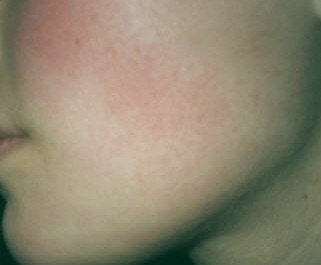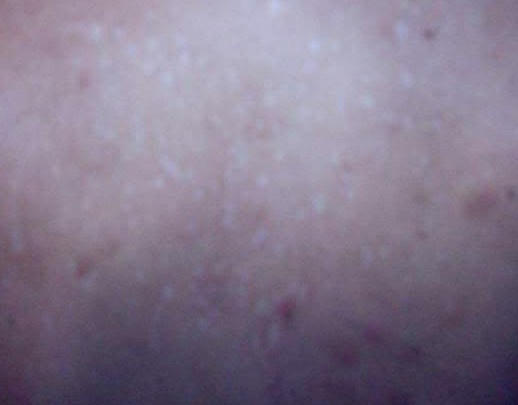Gluten is a protein that is found in food containing wheat and related grains such as rye, barley and oats. It is normally innocent in otherwise normal individuals though may trigger an immune reaction in hypersensitive individuals. In these people, the immune hypersensitivity results in destruction of cells lining the gastrointestinal tract.
The absorptive surface in the colon and mainly the small intestine are severely damaged causing clinical manifestation resulting from this physiological derangement. This results in a condition called celiac disease. Other systems may also be affected including the skin causing a rash and in the kidneys causing renal function abnormalities.
Celiac disease also called gluten-sensitive enteropathy is a chronic disease characterized by mucosal lesion of the small intestine and impaired nutrient absorption, which improves on withdrawal of wheat gliadins and related grain proteins such as rye from the diet. It is largely seen in Caucasians and rare in other races such as Africans and native Japanese. It is a common cause of malabsorption and malnutrition of food nutrients.
Causes of gluten allergy rash
The major cause of this condition is a hyperreactive immune system. There is a high genetic heritability association of this condition that shows 10 percent prevalence in first-degree relatives. The fundamental disorder is sensitivity to the alcohol soluble protein, gluten component called gliadin, in the body. This reaction is a T-cell mediated chronic inflammatory condition due to lose of tolerance to gliadin.
There is interplay between genetic predisposing factors, your immune system and environmental determinants central to the pathogenesis. When exposed to gluten, the small intestinal enterocytes accumulate CD8+ T cells and large numbers of CD4 cells that are sensitive to gliadin. With a subsequent exposure, the immune system over react producing the symptoms observed.
Family history is a major contributory factor. It has been found that individuals who suffer from this condition display similar major histocompatibility complex class similarities especially in the HLA-DQ2 or HLA-DQ8 halotypes. These MHC classes interfere with the metabolism of gliadin though some enzymes such as the transglutaminase that deaminates gliadin peptides leading to activation and secretion of active immune substrates which carry out the destruction of cells.
Signs and symptoms of gluten sensitive rash
Signs and symptoms of celiac disease tremendously vary from patient to patient. Because of its systemic nature, celiac disease symptoms can be classified into intestinal and extra-intestinal. Intestinal symptoms are more common. They include diarrhea which is the most common manifestation occurring in up to 45 to 85% of patients. Flatulence in approximately 28% of patients, borborygmus in 35-72% and weight loss.
Weight loss occurs in approximately 45% of patients. Infants and children, present with failure to thrive and growth retardation. Other gastrointestinal manifestations include severe abdominal pain and abdominal cramps. Extra-intestinal manifestations can be demonstrated in almost all systems of the body.
In haemopoietic system anemia occurs in up to 15% of patients. In the musculoskeletal system, both osteopenia and osteoporosis are observed. These conditions are major causes of pathological fractures and can result in major complications. Neurological deficits include motor weakness, parasthesia, ataxia and seizures. Hormonal disorders include amenorrhea, delayed menarche, infertility, and impotence.
Gluten sensitive rash manifestation
Dermatologic manifestations occur in approximately 10-20% of patients. They can be widespread to involve the whole body. Preference is however to the extensor surface of the limbs both upper and lower, the trunk, scalp of the head, neck, and buttocks. A highly pruritic, papulovesicular skin rash is the most common. This rash is due to immunological reaction in the skin to the presence of gluten. Withdrawal of the offending agent leads to remission.
Diagnosis
Detection of circulating anti-gliadin or anti-endomysial antibodies strongly favors diagnosis. Antibodies antibodies against tissue transglutaminase also may be detected, this is because transglutaminase is the autoantigen recognized by anti-endomysial antibody.
However, definitive diagnosis is based on clinical manifestation of malabsorption, demonstration of gastrointestinal lesion on bowel biopsy and lastly, improvement of symptoms and morphological changes of small intestine mucosa on withdrawal of the inducing agent, gluten. Serological tests can be used for screening of individuals or for follow up of patients on therapy.
Treatment and prevention of gluten sensitive rash
Treatment is mainly through diet modification. Avoiding gluten containing foods is the major mode of modification. It helps in reducing the symptoms in a big percentage of patients not on medication. Effects may be immediate but normally take some time before they are felt. Immune suppression is the main focus in pharmacotherapy.
Drugs that lower the sensitivity of the immune system such as corticosteroids are the often used. If these drugs do not work then other comobids such as lymphomas must be ruled out. Though there is a low risk of cancer transformation, untreated celiac disease may act as a predisposing factor to cancer of the gastrointestinal tract. Prevention mainly involves early screening and diagnosis to prevent complications.
Gluten Allergy Rash – Pictures



